Few managers have managed to carve out a lasting legacy at a football club as Arsene Wenger did so at Arsenal.
After his arrival in North London in the summer of 1996, Arsene Wenger took Arsenal to unprecedented heights. The pinnacle of the Frenchman's stint at Arsenal came in the 2003-04 season when the Gunners went unbeaten through the entire Premier League season. In the process, Arsene Wenger's Invincibles became the first Premier League team in history to navigate a season without enduring defeat.
However, since that high of 2003-04, Arsenal have been on a steady decline.
The Champions League final appearance in 2006 was the closest Arsene Wenger ever came in delivering the biggest title in European club football to the Gunners. Even though Arsenal competed regularly in the competition since losing to Barcelona in that Paris final, the club's stock began to plummet.
In the later years of his tenure in North London, even the prestige of playing Champions League football would be taken away as Arsene Wenger's Arsenal cut a pale shadow of their dominant selves. The decline of Wenger and his beloved Arsenal has left fans, experts and everyone involved with the beautiful game perplexed and disappointed.
Arsene Wenger’s early years at Arsenal
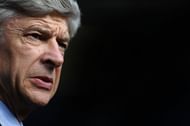
After arriving at Arsenal's Highbury Stadium in 1996, Arsene Wenger’s first major contribution was to win the Premier League and FA Cup double for the club in 1997-98. That proved to be the beginning of what were to be the most fertile years of Arsene Wenger's managerial career at Arsenal.
One of the hardest tasks for any new incoming manager is to convince fans that they have the quality and leadership skill for the job. In this respect, Arsene Wenger immediately endeared himself to the fans. But it was his players who needed convincing at first. In an interview with The Daily Telegraph, the then Arsenal captain Tony Adams revealed what his first impressions of their new manager Arsene Wenger were:
At first, I thought: What does this Frenchman know about football? He wears glasses and looks more like a schoolteacher. – Tony Adams on Arsene Wenger
In fact, due to Arsene Wenger’s cultured demeanour and measured approach, he was nicknamed Le Professeur. The name also gives us an indication of how meticulously Arsene Wenger studied his opponents before going into every game. Throughout his time at Arsenal, the Frenchman was also known to be a frugal spender in the transfer market, with his most expensive signing coming during his penultimate season in the form of Alexandre Lacazette who arrived from Lyon for € 45 million in 2017.
Arsene Wenger’s preferred tactics and players
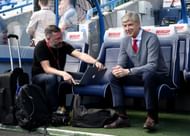
Arsene Wenger believed in playing beautiful, attractive football. He built his Arsenal team with players who had class and elegance, coupled with the right mixture of strength.
Therefore, Arsene Wenger's Arsenal could have the elegant Robert Pires and Thierry Henry and could still accommodate the towering presence of Patrick Viera in the middle.
Arsene Wenger’s penchant for technical accomplishment saw him bring in players such as Samir Nasri, Santi Cazorla, Cesc Fabregas, Tomas Rosicky and Aliaksandr Hleb. However, the Frenchman was often criticised for overindulging in the signing of flair players, instead of players who had physical presence.
Such players disbalanced his side, which was also a contributing factor to Arsene Wenger's lack of major silverware at Arsenal from 2005 onwards. In a Sunday Times interview in April 2004, Arsene Wenger provided an insight to his way of seeing football:
For me, football is first and foremost a game. It has a framework, yet should leave some part for freedom of expression – Arsene Wenger
But Arsene Wenger's rivals, especially Sir Alex Ferguson, knew about this particular trait in the Frenchman. In his autobiography, Ferguson observed:
Arsene’s softer nature…reflected the players he brought into the club. Samir Nasri becomes available, so Arsene takes him. Rosicky becomes available, so he takes him, because he’s his type of player. Arshavin becomes available, so in he comes. When you acquire a lot of those players, they are almost clones. – Ferguson, 2014, pp. 190
During his initial years at Arsenal, Arsene Wenger experimented with formations quite extensively, often switching between the radical 3-5-2 to the more stable 4-4-2, which was prevalent in English football at that time.
In his youth, Arsene Wenger was influenced by Rinus Michels’ Total Football. Throughout his time at Highbury, and later when Arsenal moved to the much bigger Emirates Stadium in 2006, Arsene Wenger wanted to play a style of beautiful stylish football inspired by a Spanish technician such as Cesc Fabregas dictating play from the middle.
Although Arsene Wenger's teams were beautiful to watch, they were often guilty of over-elaboration. Wenger's teams tended to overpass and complicate matters in search of 'aesthetic' goals when a more direct approach may have been more beneficial.
The Frenchman's later years at Arsenal would often be associated with failures, especially in the form of early Round of 16 Champions League exits, especially at the hands of Barcelona.
Since the 2004-05 season, Arsene Wenger struggled to bring silverware into the club. That season, Arsenal finished second, twelve points behind champions Chelsea. It was Jose Mourinho’s first season at Stamford Bridge.
Arsenal, so used to winning and fresh off being the unbeaten Premier League champions in the previous season, suddenly struggled to find their bearings against Mourinho's Chelsea. It irked Arsene Wenger no end, giving rise to his heated rivalry with the young Portuguese tactician, also fuelled by the fact that both Wenger and Chelsea managed clubs from London.
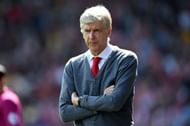
In an interview in 2014, Jose Mourinho, who returned to Chelsea for his second spell at the club, famously labelled Arsene Wenger ‘a specialist in failure’:
Eight years without silverware, that's failure. He's a specialist in failure. If I do that in Chelsea, eight years, I leave and don't come back. – Jose Mourinho on Wenger, 2014
A club like Arsenal could ill afford to go without trophies for almost a decade but they did under Arsene Wenger, which made the Frenchman an easy target for fans and fellow professionals.
Arsene Wenger’s legacy at Arsenal
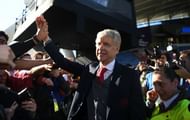
Regardless of his long trophyless years at Arsenal, it would be a folly to judge Arsene Wenger’s managerial stint at Arsenal by counting the silverware he won. The Frenchman's contribution to Arsenal and to the English game in general went beyond the titles he won for the club.
Arsene Wenger revolutionised football scouting in England. His eye for spotting young talent right from his days as a Monaco coach helped him take and develop talented youngsters under his tutelage. Cesc Fabregas, Samir Nasri, Bacary Sagna, Ashley Cole, Laurent Koscielny, Robin van Persie, Thierry Henry and countless other such players were honed and developed by Arsene Wenger.
However, most of today’s generation does not fully appreciate the aura of Arsene Wenger, nor comprehend what he was all about. Most people who began watching Arsenal since 2006-07 actually have a very negative notion about the Frenchman, and indeed his role at the club. They often forget that it was because of Arsene Wenger that Arsenal has today become a global brand; it was the Frenchman who pushed Arsenal’s move from the low-seating capacity Highbury Stadium to the Emirates.
Although Arsene Wenger did find some success in the form of winning the Community Shield and FA Cup, he never managed to add to his Premier League tally, nor could he lead Arsenal to another Champions League final, let alone win it. In fact, in 2012, Arsene Wenger had to endure the pain of watching city rivals Chelsea win the Champions League in the unlikeliest of circumstances.
In many respects, Arsene Wenger’s decline in the final half of his Arsenal managerial career evokes a sense of utter despondency. There were no signs that he would endure such a dry spell when Thierry Henry and company lost 2-1 to Barcelona in the 2006 Champions League final in Paris.
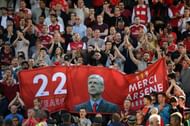
Arsene Wenger is by no means a specialist in failure because a manager’s legacy or lasting influence at a football club cannot be quantified by silverware alone; it is measured by the overarching narrative he helped the club to set.
Therefore, in this respect, Arsene Wenger is the father of the modern Arsenal; a new, twenty-first century footballing conglomerate that is prepared for the future. Arsene Wenger and Arsenal are synonymous to each other, and his legacy in the English football landscape is assured.
